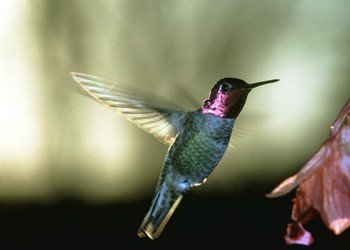Everyone loves hummingbirds. Who can resist those colorful
little birds with jet engines for wings?
Everyone loves hummingbirds. Who can resist those colorful little birds with jet engines for wings? And, if you love hummingbirds, it’s likely that you’ve put out hummingbird feeders in the garden somewhere along the line. Without getting into a debate about whether hummingbird feeders are good or bad because hummingbirds might grow dependent on them, this week’s column is devoted to what type of hummingbird feeders are on the market.
There are literally dozens of styles of hummingbird feeders available today. While none of the feeders are truly “wrong,” some are better than others. For instance, the so-called “flying saucer” style feeders tend to attract the little critters, are reliable and easier to use and maintain.
One big factor upfront: The easier the feeder is to use and clean, the more likely you are to keep it cleaned and filled. Clean and filled feeders will attract more hummingbirds. Sugar solutions usually last about three to five days, and feeders should be emptied and cleaned as soon as the sugar solution starts to appear cloudy.
As for the red dye solution that attracts hummingbirds, look for a feeder that is red itself rather than relying on dye to color the sugar solution. Most feeders on the market today are already red. Most also have built-in ant moats to solve ants-in-the-feeder problems. Most, too, have bee guards, and do not contain yellow parts. Bees and wasps are attracted to the color yellow.
For best results, your feeder should also have built-in perches. Hummingbirds prefer to sit when they feed if they are able to do so. As for the size of feeders, the smaller the better until you determine how heavy the hummingbird usage is.
The proper sugar solution recipe for feeding hummingbirds is four parts water to one part white sugar. For instance, one quarter cup of sugar stirred into one cup of water.
Tap water is fine, but if you have a water softener, it’s best to use partially or totally filtered water since softeners often add other minerals like salt. Warm water is best to help dissolve the sugar. Commercial nectar mixes are fine, but they are quite a bit more expensive than your own recipe.
Where should you locate your feeder? Ideally, you want it where you can easily view the hummingbirds as they come to feed. This usually means close to your house. However, this often takes time. Experiment with your feeder location.
Once hummingbirds discover that your feeder is a reliable source of food, they will remember exactly where it is.
Go ahead and hang your feeder close to your house and near a window. Hummingbirds are rather fearless, and don’t mind being observed close at hand if you don’t make any sudden moves.














